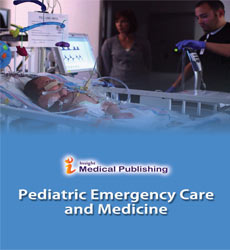Abstract
Botulinum Toxin Usefulness in the Treatment of Drooling in Childhood
Drooling is a common and severe problem in different kind of disorders. It affects both adults and children and it is the cause for respiratory infections or dermal complications as minor social participation. Ultrasound botulinum toxin injections could be a successful option to reduce excessive sialorrhea in children independently whose origin it has. Retrospective-descriptive survey. Period study: 2010-2019. Inclusion criteria: patients under 18 on severe drooling. Measure units: demographic data, glands injected, botulinum toxin dosage, side effects, intensity and frequency drooling scale (IFDS), and daily changes of bibs/tissues before and 1 month after ultrasound guided injection, use of sedation during procedure and feeding mode. Intervention was performed with ultrasound guidance of salivary glands (10 MHZ linear transducer: submental acoustic window of submaxilar glands and transverse scans of parotid glands) 67 patients, 58,2% females. Mean age 9,03 (limits: 4-14 years). 46,3% were Cerebral Palsy patients. The most frequently gland infiltrated was submaxilar (53,7%). They showed severe drooling (65,7%) or profuse drooling (26,9%) and 88,1% constantly drooled pre treatment. Botulinum toxin total dosage average used, was 53,78 IU (Parotids/ submaxilar mean dosage: 23,06 IU/ 19,49 IU respectively). 30 day post treatment assessment: 6% no drooling and 68,6% mild or moderate drooling, 34,1 % occasionally drooled. Statistical significative difference (p <0,05%) pre-post infiltration. Daily bibs changes post-injection reduction: 48%. Non-response to toxin injection in ten of the treatment sessions: 14,9% cases. Side-effects: 2,98% (hematoma/ mild dysphagia). No differences observed by glands number injected, sedation procedure or underlying disease.
Author(s):
Abstract | Full-Text | PDF
Share this

Google scholar citation report
Citations : 50
Abstracted/Indexed in
- Google Scholar
- International Committee of Medical Journal Editors (ICMJE)
- Secret Search Engine Labs
Open Access Journals
- Aquaculture & Veterinary Science
- Chemistry & Chemical Sciences
- Clinical Sciences
- Engineering
- General Science
- Genetics & Molecular Biology
- Health Care & Nursing
- Immunology & Microbiology
- Materials Science
- Mathematics & Physics
- Medical Sciences
- Neurology & Psychiatry
- Oncology & Cancer Science
- Pharmaceutical Sciences

